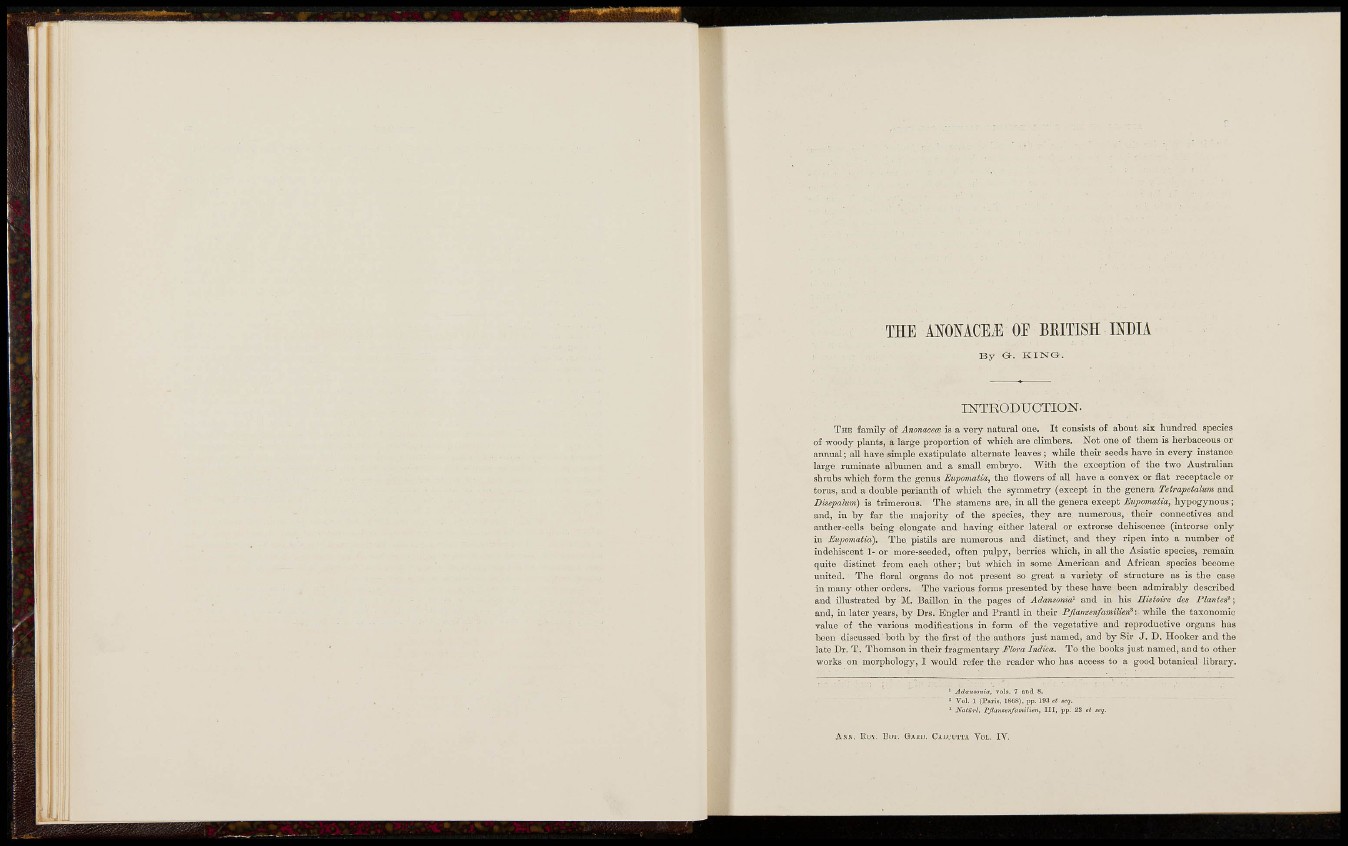
THE MOIACEi; OP BRITISH INDIA
B y G. K I N G.
INTRODUCTION.
THE family of Anomcece is a very natural one. It consists of about six hundred species
of woody plants, a large proportion of which are climbers. Not one of thorn is herbaceous or
annual ; all have simple exstipulate alternate leaves ; while their seeds have in every instance
large ruminate albumen and a small embryo. With the exception of the two Australian
shrubs which form the genus Eupomatia, the flowers of all have a convex or flat receptacle or
torus, and a double perianth of which the symmetry (except in the genera Tetrapetalum and
Disepalum) is trimerous. The stamens are, in all the genera except Eupomatia, hypogynous;
and, in by far the majority of the species, they are numerous, their connectives and
anther-cells being elongate and having either lateral or extrorse dehiscence (introrse only
in Eupomatia). The pistils are numerous and distinct, and they ripen into a number of
indehiscent 1- or more-seeded, often pulpy, berries which, in all the Asiatic species, remain
quite distinct from each other; but which in some American and African species become
united. The floral organs do not present so great a variety of structure as is the case
in many other orders. The various forms presented by these have been admirably described
and illustrated by II. Bâillon in the pages of Adansonia^ and in his Histoire des Plantes^-,
and, in later years, by Drs. Engler and Prantl in their Pfiamenfamilien^ : while the taxonomic
value of the various modifications in form of the vegetative and reproductive organs has
been discussed both by the first of the authors just named, and by Sir J . D. Hooker and the
late Dr. T. Thomson in their fragmentary Flora Indica. To the books just named, and to other
works on morphology, I would refer the reader who has access to a good botanical library.
' Jdansonia, vols. 7 and 8.
« Toi. 1 (Paris, 1868), pp. 193 ei stq.
' NalûH. PJlanienfamilien, III, pp. 23 et ie£.
ANN-. BOY. BOX. GAED, CALCUTTA YOL. I T .